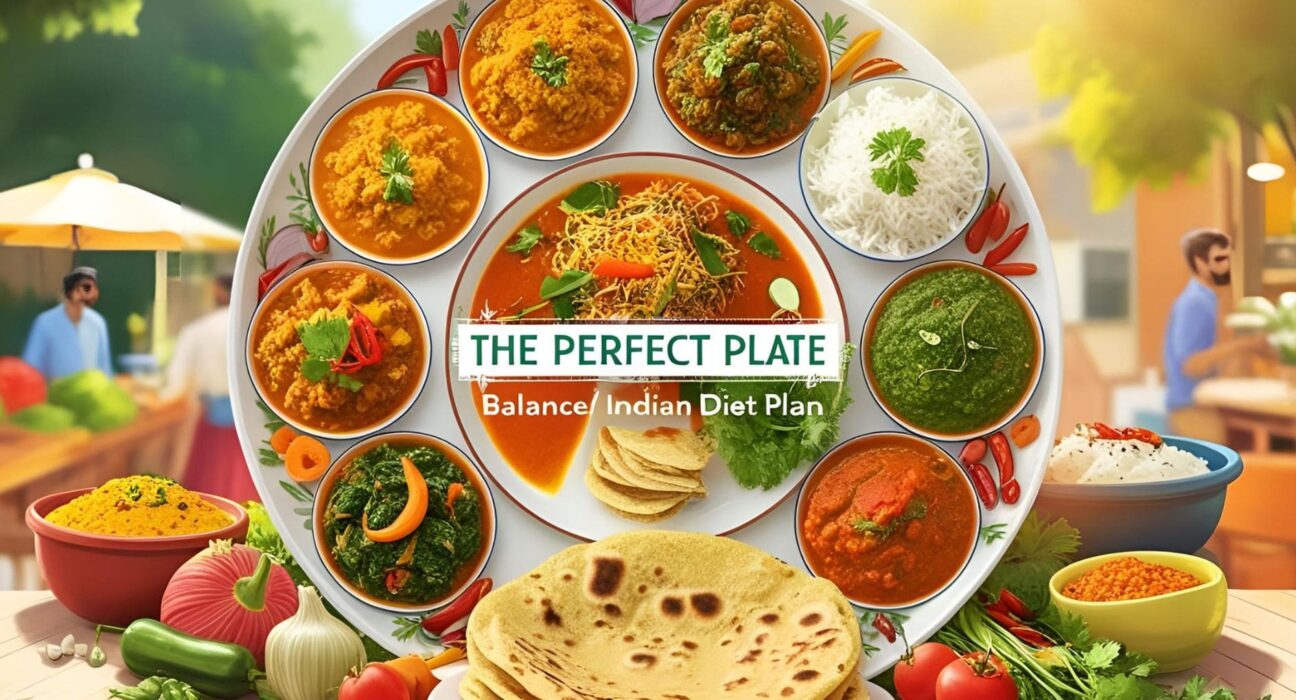Eating healthy doesn’t mean you have to stop eating your favorite foods – everything is about how to make a balanced meal at home! Maintaining a healthy diet allows you to stay energized, aid digestion and enables you to maintain your weight.
But what would an Indian diet’s ‘perfect plate’ look like? In this article we explain it in easy and delicious steps!
We know Balanced Meal Matters….But how?
A balanced meal is like fuel for your body—it keeps everything running smoothly. When you eat the right mix of nutrients, you feel more energetic, your digestion improves and your immune system gets stronger. On the other hand, skipping essential nutrients can lead to fatigue, cravings, and even long-term health issues.
Effects of a Balanced Diet on Health
Like any other machine, a human body requires fuel to keep everything functioning and running smoothly. Having the proper balanced diet improves energy levels, digestion, immune system, and so much more. While proper balanced diet can increase your energy and skipping essential nutrients can lead to fatigue, increase cravings and several long-term issues.
The Indian Perfect Plate Formula
It is simple to create a balanced meal if you follow certain steps. This is how you can best formulate your plate for nutritional value:
50% Vegetables & Fruits (The Fiber & Vitamin Heroes)
Vegetables and fruits should take up half your plate. It’s filled with fiber, vitamins, and antioxidants, so fruits and veggies keep your gut healthy and protect you from diseases. In Indian meals, this could mean a combination of cooked sabzis like palak or bhindi and fresh salad alternatives like cucumber-tomato and even beetroot. These also packed with nutrients and count among Indian superfoods for daily diet.
Tip: Try “Rainbow Eating”—add different colors of veggies (green spinach, orange carrots, purple eggplant) and get many different nutrients.
25% Whole Grains & Millets (The Energy Boosters)
The right type of grains will also keep you fueled with energy throughout the day. Instead of refined grains, such as white rice and maida, use whole grains like brown rice and millets like bajra and jowar. These will keep you full for longer and help prevent sugar crashes because they digest slowly.
Ragi and jowar millets were consumed in ancient India, and are now gaining popularity as ‘ superfoods for daily diet.’
25% Protein (The Muscle & Repair Builders)
Vegetarian Indians have plenty of options for dietary protein, including split peas, chickpeas, paneer, and tofu, while meat eaters can opt for chicken, fish, and eggs. Proteins are necessary for repairing muscle tissue, defending the body’s immune system, and metabolism.
Did you know that when you mix dal with rice, like in khichdi, you get all the essential amino acids?
Tip: Chana and makhana are some protein-rich snacks for busy people.
Adding a Bit of Healthy Fats (For Brain & Hormone Support)
The right kind of fats can improve the function of the brain and even allow for better hormone control. Rather than fried snacks, consume nuts (almonds, walnuts), seeds (flaxseeds, chia), and ghee (but in moderation).
Ghee Isn’t Really Medicine But Does Work For Your Health!
Simple Balanced Indian Meals on Health
- 1 Multigrain Roti- For slow release energy
- 1 Bowl Palak Dal- Spinach for iron + dal for protein
- 1 Katori Cucumber Salad- Hydrating and fiber rich
- 1 tsp Ghee- Improves taste and helps nutrient absorption
- 1 Small Bowl Curd- Probiotics for gut health
- 1 Cup Brown Rice- Longer lasting energy compared to white rice
- 1 Bowl Raita- Helpful for cooling the body, very beneficial for digestion
- Handful of Roasted Chana- Crunchy and filled with protein
Common Mistakes to Avoid
A lot of people are trying to eat healthy, but forget some important factors. Skipping protein in your diet can cause weakness and frequent cravings, on the other end, overloading on carbs (like too much white rice or bread) causes energy crashes. Another mistake? Missing portion control—healthy foods can responsible for weight gain when consumed in large quantity
Final Tips for a Perfect Plate
- The 50-25-25 proportion should always be followed – vegetables take up half of your plate, while protein and grains take up a quarter each.
- Focus On Eating – Remember not to use your phone or use the television while having your meal.
- Drink Appropriately – Stay away from sugar-laden beverages and enjoy herbal tea, water, or nimbu pani instead.
Let’s wrapping it up!
It is simple, delicious, and flexible to construct a Balanced Indian Diet Plan. If you are a fan of roti-sabzi or rice-dal, the most important aspects that you must focus on are variety, portion control, and a good balance of nutrients.
You don’t have to do everything at once – just replace white rice with brown, add a handful of nuts, or throw in an extra vegetable. Your body will thank you!

